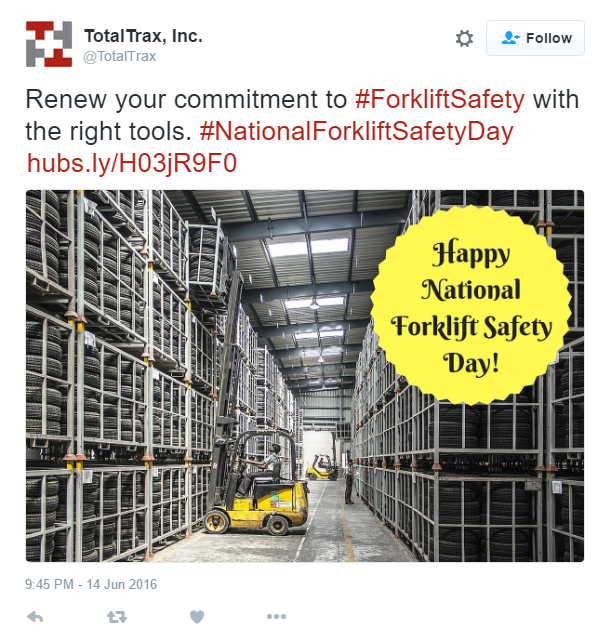
by Fronetics | Jul 28, 2016 | Blog, Diversity, Leadership, Logistics, Strategy, Supply Chain
In an interview with Kate Lee, Saunders discusses her career in the logistics industry and key issues within the supply chain.

Kelli Saunders is president of Morai Logistics.
The percentage of female CEOs in the Fortune 500 declined from 4.8% in 2015 to 4.2% in 2016. Canada, too, has realized a decline: 8% of the highest-paid executive positions are held by women, down from 8.5%. Research conducted by Gartner in April 2016 finds that for the supply chain industry, “the percentage of women in leadership positions decreases as the corporate ladder rises.”
It was a “fluke” that Kelli Saunders found the supply chain industry. More than 30 years later, Saunders is president of Morai Logistics Inc., an Authorized Agent of Mode Transportation. I sat down and talked with Saunders about her career and her perspective on women within the supply chain industry.
How did you find the supply chain industry?
It was a fluke. I was just out of college and needed a job. I found an ad in our local paper for a telemarketer, and I applied. I was hired as a telemarketing supervisor for a Canadian intermodal marketing company (IMC).
The man who owned the company focused on his employees. He taught us how to read a balance sheet and an income statement. He taught us the difference between added value and value added. And he taught us the industry. He had us climbing into trucks and railroad yards so that we could truly understand the industry.
When his wife sadly passed away, he decided to sell the company. He allowed six of us to become majority shareholders.
Fast forward sixteen years. The company has been bought and sold many times. I’ve stayed with the company through this process. Each time the company changed hands, my role changed, exposing me to different aspects of the business. Six years ago I bought the company back and now serve as president.
Your first boss sounds like he was a pretty incredible person.
He was. And now it is my turn. It’s my turn to give back.
I am a big believer in millennials. Their energy is contagious. I strive to be a mentor to them, and to let them know that they can dream big.
You’ve been in the industry for more than 30 years. What changes have you seen?
The industry is becoming more diverse, and more women are entering the industry. That being said, there is a still a long way to go. A big challenge is getting women and minorities to recognize that the supply chain industry is an option.
Tell me more about this.
Women don’t seem to recognize that there are incredible opportunities in the supply chain industry. The industry needs to do a better job at sharing what is happening — what the industry is all about. People think it is dull and boring; it’s not.
The supply chain industry is not just about getting things from point A to point B. The industry is an entire sophistication of infrastructure. There are so many aspects that we take for granted. Streamlining the chaos within the industry is incredibly rewarding.
How can this problem be addressed?
We need to get out and talk to more people. We need to go into the schools; we need to make connections and have conversations. Companies need to share their stories more widely. It is all about getting the word out there.
What advice do you have for people who do enter the industry?
Surround yourself with the best of the best. This is true when it comes to your colleagues, your employees, your vendors, your clients — everyone. This not only makes life more enjoyable, it has an impact on the bottom line.
Interestingly, 75% of the staff at Morai Logistics are women. This is not by design. By seeking out the best of the best, it just happened.
As a mentor, what advice do you give?
Dress for the job you want, not for the job you have. But I am not talking just about clothes. I am talking about your mental state, your body language, the quality of the work you produce. Visualize the job you want and portray that in all you do.
I also tell people to always be honest, respectful, and ethical. These characteristics are essential.
Getting the right product to the right place at just the right time is a complicated business. Kelli Saunders, CEO of Morai Logistics, understands the complexities and nuances involved in long term sustainability in the logistics industry. This is why the company she leads is the successful multimillion dollar, multinational business that it is today.
Kelli’s experience in the supply chain and logistics field is extensive. During her 30 years in the industry, she has been recognized for her strategic selling, relationship development, and management throughout North America. She started from her humble beginnings as a telemarketing supervisor for a Canadian 3PL provider to creating Morai Logistics Inc.
Since then Kelli has received numerous awards for her expertise in strategic sales. She has shown consistent impact in the industry by being awarded Salesperson of the Year numerous times, and was the former president of the Toronto Transportation Club. As a certified diversity supplier, her company has received WeConnect Canada’s Doing Business International Award and WBE Canada’s Doing Business Award as a woman-owned business.
Aside from assisting her clients with services including warehousing, management consulting and technology services through Morai Logistics, Kelli’s drive also shines through in her other passions.
She is an active member of the Women Presidents Organization, WeConnect International, and WBE Canada. Kelli strives to inspire women by telling her story and sharing her lessons at talks to support fellow female entrepreneurs. She also takes time to enjoy spinning, running, golf, and travelling. Her motivation and drive shows in her company’s performance and inspires her team to succeed.
Related posts:

by Fronetics | Jul 25, 2016 | Blog, Content Marketing, Logistics, Marketing, Strategy, Supply Chain

Get your news in front of the one billion iOS users with this step-by-step guide to publishing on Apple News.
Do you use Apple News? If you have an iOS device (iPhone, iPad, or iPod Touch) and have upgraded to iOS 9 or beyond, the app is preinstalled.
Users love the easy-to-read interface and the fact that they don’t have to download a number of different third-party news apps. That’s because Apple News aggregates content from various media outlets, from the New York Times to local blogs, based on user preferences. You can refine what news you see by choosing your preferred publications and topics, which are as general as politics or as specific as the Chinese economy.
There are a number of topics and channels relevant to the supply chain. From supply chain management and automotive logistics to packaging news and sustainable brands, Apple News is an excellent source of content for companies in the industry.
Here’s more good news: Anyone can publish on Apple News. That means your business can distribute your content through this platform with the chance to reach the more-than-one-billion iOS users around the globe.
Signing up as a publisher is simple. Here are four easy steps to get started.
1) Sign into iCloud.
Go to https://www.icloud.com/#newspublisher and enter your iCloud login details. You can quickly create a free account if you don’t have one already. Click “Continue.” Note that you’ll need to agree to the End User License Agreement.
2) Set up your channel.
Complete details about your publisher name, contact info, and channel name. As a publisher, you can have multiple channels, each representing a different publication (such as a blog and a newsletter). After set up is complete, you can add a new channel by clicking “Create New Channel” and entering publisher and channel info.
Channel content is divided into sections. Your default section will contain the main content of your channel, but you can have up to 25 other sections to organize your content by topic or type. Apple suggests that 6 to 8 sections is optimal.
3) Upload your logo.
Upload a PNG file (smaller than 2 MB) of your logo that will be used throughout News to identify your content.
4) Select a publishing format.
You must choose between RSS feed or Apple News Format, which optimizes your content for iOS devices. Other benefits of Apple News Format include the ability to create articles in Publisher, add team members, get analytics, and earn revenue through iAd.
Once you submit all of this information, Apple will review your information and get back to you before your channel launches officially.
Learn more about publishing on Apple News.
Related posts:

by Elizabeth Hines | Jul 21, 2016 | Blog, Logistics, Strategy, Supply Chain, Talent

A veteran recruiter explains where the supply chain talent shortage is headed and how companies can overcome the challenges.
A recent report on the supply chain talent gap draws a sobering conclusion: The supply chain management profession finds itself in crisis. Unless you do it right, attracting and hiring skilled professionals can be challenging.
Deloitte’s third annual Supply Chain Survey, released last year, also states: “Many organizations are confronting critical shortfalls of talent. Years of headcount reduction, training-budget cuts, and the retirement of highly skilled individuals have hollowed out the ranks of veteran professionals.”
The Deloitte findings are echoed in another report by the Haslam College of Business at the University of Tennessee. While the driver shortage is well known, the report maintains the talent gap encompasses every level of supply chain management and is likely to grow worse as baby boomers retire.
So what is an organization to do? How can you become better prepared and make your search for talent more effective?
Few people are better positioned to answer these questions than Rodney Apple, founder and president of SCM Talent Group. With almost 20 years of experience as a supply chain recruiter, he has filled more than 1,000 supply chain positions ranging from executive-level at Fortune 500 companies to leadership and staff-level roles across large networks of manufacturing and distribution facilities within the United States.
We sat down with Apple to get his thoughts on the realities of the supply chain talent drought.
EBN: What is the status of the supply chain shortage from your perspective?
Apple: I work with a lot of companies in key industries across the supply chain, from junior to C-level positions. Here’s what I’m seeing: It’s not getting any better. If you break it up into job level, entry-level positions tend to be less challenging to fill since more universities are now offering supply chain degrees. Supply chain students at Michigan State University, which offers the top-rated program, can count on multiple offers and interviews before they even graduate. The same thing goes for Penn State, University of Tennessee, and other universities with top-tier supply chain programs.
Middle management, let’s call it junior to mid-level, that’s where companies are struggling; that’s where you find the bulk of people doing the work, and that’s where most of our searches are. It really is about sheer numbers, a generational issue. At the executive level, enough people have risen up, but I’m concerned that as baby boomers retire, it could create a problem in the near future.
Which positions tend to be the most challenging to fill?
Junior-level positions, those who have between one to four years of experience. When you land your first job out of college, you keep your head down and get immersed in the job that has to be done. You’re not actively looking for a new job. So you really have to do a lot of direct sourcing to find the analysts, engineers, inventory managers, and planners and sell them on why they should make a career move at this stage of their career. They are not in management but doing tactical, analysis kind of work. Those are the most challenging positions.
At what point do companies ask for your help?
Small and medium-sized companies often come as soon as a position needs to be filled since they don’t have dedicated resources for recruiting. If they have tried themselves and the search has been unsuccessful, the need is urgent by the time they come to us.
What challenges do companies run into when trying to recruit talent?
When you look at the supply chain function, it’s typically the most complex, diverse, and challenging. Unlike recruiting for clear-cut, core corporate functions such as IT and Finance, the supply chain sector will yield a much greater variety of job profiles. Add the complexity of different job levels and geographic factors that may involve distribution centers and plants spread out all over the country, and you will see why it can be challenging to find the right fit.
Companies also tend to understaff or undervalue the supply chain recruiting function. Coupled with a lot of internal movement, from the corporate office to the field and back, it’s like a game of musical chairs — you’re always backfilling internal movement. If you’re also looking for a high-demand skillset, it can be similar to finding a needle in a haystack.
How should a company prepare to increase the likelihood of a successful search?
First of all, you need to up your game when it comes to finding and sourcing candidates. You have to master the intake process. Before you even post a job opening, sit down with the hiring team or manager. You have to truly understand your company’s unique value proposition, selling points, culture, and what makes it exciting to work for your company. Then, you have to gather information on what I call the supply chain footprint; you have to understand the company’s organizational structure — the number of plants, warehouses, key challenges, key opportunities, key projects — and look at its size, scope, and complexity, including the process, system, and talent.
Next, you have to understand the position you’re trying to fill: the selling points, key deliverables, key challenges, key traits, and so forth. Use that information to build the position profile. A lot of companies start with the job description and fill it with skills and qualifications, and that is not the best way to go about it.
What’s the next step?
You take that information and sit down with hiring team to develop what I call an omnichannel sourcing strategy. There are a lot of channels to tap into. Many make the mistake of thinking the act of posting gets the job done, but you can never just sit back and wait. You may be able to get away with that if there’s an abundance of talent in the marketplace or if you’re a marquee employer, but in the supply chain you have to employ other sourcing tactics, which could include proactively reaching out to universities in the region and even nationally that match up with people in the workforce.
You also need to direct source across different channels. Come up with a targeted list not only of industries, but of companies who may employ the type of talent that you’re looking for. You don’t always need to shop in same industry because supply chain tends to be a transferable skillset, especially in logistics, procurement, and inventory planning. Other channels not to be left out include LinkedIn, Google search strings, top supply chain associations, membership directories, and employee referrals — you want to have strong referral programs to allow people to easily share job opportunities with their networks and potentially build an internal resume database if you have frequent openings.
What part of the search process tends to be forgotten?
When you’re a smaller company, you have to understand your unique value prop. It’s critical that you find a candidate who’s looking for the same work environment that you offer; I call it the ‘motivational fit.’ You may not want to source someone from a Fortune 500 who’s used to robust process systems, organizational structures, volumes, scope, and immense complexity.
Look at companies in your own range. Can you find people who want to continue working for similarly sized companies with similar challenges and opportunities? You may want to engage search firms if you only have a few openings to fill per year as it costs less than employing a full-time recruiter. Every company needs to figure out what talent acquisition resources they need from a people, process, and systems/tools perspective in efforts to proactively hunt people down because that’s what it takes to land top supply chain talent these days.
What can you do to make it last?
Make sure you have a strong onboarding program. Don’t just throw the person into the fire. On the onset, establish goals and expectations. The new hire should understand what needs to be accomplished and outline key deliverables, projects, and performance expectations. This is where management and leadership come in to make people successful, especially in a smaller company. Most companies are doing a pretty good job in this area with mentorships, additional training, courses, and so on, to help the employee reach his or her career goals.
Some companies are also moving away from the rigid once-a-year performance review to more real-time, on-the-spot, feedback. Everyone wants to advance. If your company requires everyone to be in a position for 24 months before they can even apply, you run the risk of losing them. In general, you should be more flexible how you move talent throughout the organization. It can do wonders.
What is your experience when it comes to looking for supply chain talent? What do you consider to be key steps to success?
This article originally appeared on EBN Online.
Related posts:

by Fronetics | Jul 11, 2016 | Blog, Content Marketing, Logistics, Marketing, Social Media, Supply Chain

This is part two of a three-part series on Twitter for B2B. See part one, Twitter for B2B, and part three, How to Use Twitter Analytics.
If you’re not sure what else to tweet, try these 20 ideas.
Twitter is an excellent platform for sharing news and reaching your customers, but it sure can be a lot of work. Our recent social experiment showed us that engagement is highest for Fronetics when we tweet around 40 times a day. That takes a lot of time and energy — not to mention, a lot of content.
You, too, may find yourself frequently strapped for quality tweeting material. We’ve got some ideas to not only fill your feed but to keep your followers interested and engaged.
A few things to remember
Keep in mind the 4-1-1 rule, an idea popularized by Content Marketing Institute founder Joe Pulizzi and Tippingpoint Labs: “For every one self-serving tweet, you should re-tweet one relevant tweet and, most importantly, share four pieces of relevant content written by others.” This prevents your Twitter account from seeming too self-promoting, which quickly will turn off followers, and it reinforces your business’ position as a helpful source of information and knowledge.
Remember, also, that you don’t have to tweet just text. You can also share photos, videos, Slideshares, and links. Mix it up to keep things interesting.
With that said, here are 20 ideas to get you tweeting.
Tweet this
1) Release news.
Twitter has become the new newswire, where stories break and people turn for to-the-minute information. It’s a great place to offer updates about product releases, changes in service, or other company announcements. But also you can share news that might affect your followers or your supply chain: severe weather, acts of terror, or economic or political events.
2) Share company or industry data.
We’ve written before about the potential for data-as-content. Tweeting stats, data, and other numbers relevant to your audience is a great way to get started. You can type out the information in less than 140 characters or create a quick infographic or image.
3) Mine Reddit.
Reddit is an endless source for content of any kind. Create a multireddit with industry-specific subreddits so you can quickly browse what’s trending to share with your audience.
4) Recycle an old blog post.
Be it a week or a few years later, there’s no shame in reposting content after some time has gone by. Maybe it’s relevant to current events. Maybe it got overshadowed by another breaking story or event when it was originally posted. Maybe it did really well the first time, and it’s still relevant. Regardless, tweeting about an old post can drive new traffic to some of your best content. You can always frame it as “ICYMI” (in case you missed it) or a “Best of” post.
5) Praise your suppliers.
Sharing a positive experience with a business partner is great exposure for the partner and good karma for you. It also shows your audience that your behind-the-scenes operations are running smoothly, which reinforces confidence in your products or services.
6) Share a meme.
An internet meme is a humorous piece of media (most often a photo) shared online from user to user. Show your brand’s personality by posting one that will make your followers smile.

7) Thank inspiring speakers from an industry conference.
Did someone give a particularly interesting presentation? Tag them and thank them. Maybe they’ll follow you or retweet you, giving you lots of exposure.
8) Throw it back.
Post an old photo or an old tweet on a Thursday to participate in Throwback Thursday (#TBT). “Old” doesn’t have to mean decades ago, by the way. People frequently use content from earlier in the year — even earlier in the week.
9) Reveal your favorite follow.
Do you really enjoy news or content from another user? Share that person’s Twitter handle with a quick explanation of the kind of tweets followers can expect. You’re offering valuable information to your audience — and you’ll get excellent exposure for your business if the user has a large following and engages with your tweet by liking or retweeting it.
10) Celebrate holidays.
Wish your followers happy and safe holidays, and show photos of your employees celebrating special events. Remember holidays aren’t limited to major religious or patriotic days of observance. International Women’s Day, Bring Your Child to Work Day, and National Ice Cream Month can inspire content. Days of the Year is a great resource for little-known holidays. Did you know that July 11 is International Town Criers Day?

11) Comment on trending topics.
See what people in your network are talking about. The Trends column on the left of the homepage shows popular topics of conversation tailored to you based on your followers and accounts you follow. If a trending topic involves something you have experience with, offer insight and information to help position your company as a thought leader in the industry.
12) Retweet your executives.
Get exposure for your management team or other content spokespeople in your company by retweeting them.
13) Quote someone famous.
Everyone can relate to inspirational quotes. Tweet your favorites or create graphics to share. Or, follow leaders and thinkers you admire and retweet particularly poignant thoughts.

14) Praise an industry leader.
Tag someone to tell them that you liked their book, article, or post. Congratulate newly appointed executives of competitors and business partners. Recognize someone for a courageous business decision, successful quarter, or outstanding support of a charitable organization.
15) Hold a contest.
Build excitement about a product by asking followers to post photos of creative alternative uses with the hashtag #HowNotToUse. Have them share their best recipes using your wholesale food products. Or ask for submissions to name your newest cargo ship. (Boaty McBoatface?) Whether you give a prize or not, people are competitive by nature and will enjoy participating.
16) Answer an FAQ.
Ask your customer service team for a list of customers’ most frequently asked questions and regularly tweet out answers.
17) Ask a question.
Whether “What do you think of our new product?” or “Do you have plans for the long weekend?” there’s no better way to get a response than to ask a question.
18) Conduct a poll.
If you’re looking for a specific answer, use the poll button to see what your followers are thinking. It can be related to your business or just for fun. Try both and see where you get the most engagement!
19) Share photos of company events.
Days of service, employee milestone celebrations, executive retreats: photos help followers attach faces to your business name. It also gives them a behind-the-scenes look at company culture and builds a positive image of your employer brand.
20) Retweet what your network is sharing.
Share helpful, informative, or entertaining content from the users you follow. You not only offer value to your followers, you also let the user know you like their content and prompt them to do the same for you.
Related posts:


by Fronetics | Jul 7, 2016 | Blog, Strategy, Supply Chain

Locally sourced foods are popular with consumers. But for restaurants, the shorter supply chain is plagued by food safety concerns.
Shorter does not mean simpler when it comes the food supply chain. In fact, working with small local producers often introduces a whole new set of challenges, particularly in regards to food safety and preparation.
Take, for example, the chain restaurant Chipotle, which boasted a menu supported by locally sourced foods. Last year, the chain was linked to outbreaks of E. coli, norovirus, and salmonella. Today, shorter food supply chains are under new scrutiny because of safety concerns.
Professor John Quelch of Harvard Business School and T.H. Chan School of Public Health recently authored a case study on food supply chain challenges. He summarizes his findings in an interview with the Harvard Business Review, discussing the major obstacles to local sourcing, how to manage them, and the changing appearance of food supply chains as we move forward.
Here are some highlights:
When there are fewer intermediaries between supplier and restaurant, the supply chain is actually more complex and fragmented, and safety is harder to control.
Essentially restaurants must trust numerous individual suppliers rather than having a standard quality control procedure for a manageable number of specific food sources. McDonald’s, for instance, gets chicken for all its locations from a handful of controlled sources. A nationwide chain that is sourcing locally, on the other hand, will have as many suppliers as there are locations, in theory. This means they may not be able to monitor every one on site.
Sources that mass produce have sophistication and experience in food testing that small local growers lack.
When you source food locally, inspections are on an honor system with that producer. But, the producers may lack the knowledge to assure the highest level of safety. They may not have experience with USDA inspection procedures, and their internal inspection systems may not be as well developed as a company with global operations.
Establishments that want to source locally need to factor in costs of their own safety protocols.
Yes, they may need to charge more from the consumer to balance this, but the safety checks are a must. It does not need to be done in-house either. According to Quelch, a number of very competent, existing independent food testing companies can assure safety and quality. Remember also that consumers are often willing, and expect, to pay more for locally sourced foods, particularly if they are organic and fresh.
Supply chain transparency is a must.
Many larger supply chain companies already have tracking systems in place, but such transparency is lacking at the local level. If an incident of illness occurs from a food supply, the establishment needs to be able to determine what caused it and where it was sourced from. They should be able to hone in on the source as fast as possible, so the rest of their supply chain is left out of the equation and operations are not shut down.
The future will blend global and local suppliers.
A minority of consumers will still have a passion and demand for locally produced, farm-to-table food. But, many consumers will remain price-sensitive, looking for safe food at a reasonable price. So, consolidation will probably occur through partnerships and mergers of global and local suppliers. Large food processing companies may start using local sources to make branded products, which are sourced closer to the target consumer.
Related posts:

by Fronetics | Jul 6, 2016 | Blog, Logistics, Strategy, Supply Chain, Talent

The talent gap represents a professional opportunity for motivated individuals looking to advance their supply chain career.
The global supply chain is continuously evolving, offering new opportunities as demands shift and new technologies are born. But how do you evolve with it?
The key is knowing where to look and how to leverage your talent and skills to fit demand. Opportunities are abundant now, but they are also growing, according to the U.S. Roadmap for Material Handling & Logistics. It predicts there will be 1.4 million new jobs in the logistics and supply chain field by 2018.
In fact, the number of supply chain employees is expected to double by 2017, with a high demand for managerial talent. That equates double the opportunity for you to move your career forward!
Here are 5 key actions to advance your logistics or supply chain career:
1) Consider all the skills in your wheelhouse.
Evaluate and take stock of your skills and experience. Know how to articulate exactly what you bring to the table when you consider a new position. Your skills may also be highly transferable, so it is wise to be open to new opportunities. Finally, expand those skills with certifications that will give you a competitive advantage. Look for certifications that enhance your operations and supply chain management skills, like those through the American Production and Inventory Control Society (APICS).
2) Network within the industry.
Employers seeking supply chain talent have to be able to find you. Join associations like APICS, the Institute for Supply Management (ISM), and the Council of Supply Chain Management Professionals (CSMCP). You will gain access to career advice and be a part of a network of supply chain professionals. Join online interest groups and professional networking platforms such as LinkedIn. Follow industry blogs and make connections that relate to, and promote, your career aspirations.
3) Expand your software and technology skills.
This is a constantly evolving area in the supply chain, with new software emerging and a growing demand for talent that knows how to use it. Educate yourself within the software and technology space, and you will open many new doors of opportunity.
4) Know how to promote your soft skills.
Do you have problem-solving experience? A background in communication? Leverage those skills on your resume. Recruiters typically have a list of about 30 job skills that they look at when reviewing job candidates. But soft skills take priority because they produce the most successful new hires. These include: knowledge of basic business ethics, problem-solving acumen, and solid communication skills.
5) Let your differences shine.
You may not see much young or female talent in today’s supply chain industry, but don’t let that discourage you. In fact, this signals opportunity. Many companies are ramping up efforts to recruit (and keep) young talent. And women tend to be strong in many of the soft skills needed for the future of SCM. According to Shanton J. Wilcox, vice president, North America, and lead for logistics and fulfillment at Capgemini, “Many so-called tactical jobs will be replaced by positions requiring more interpersonal and relationship management skills.”
With the present challenges in securing supply chain talent, recruiters are actively searching for specific skills and new employees. You can answer to this demand if you know how to leverage, expand, and promote your skill set to the right people.
Related posts:










